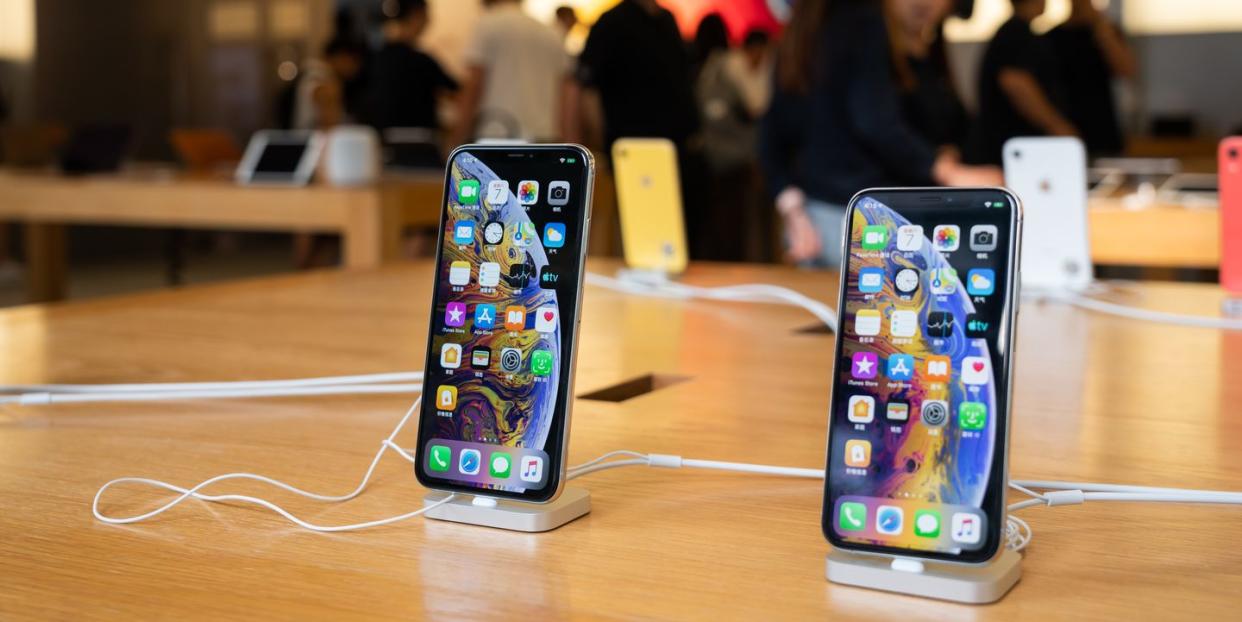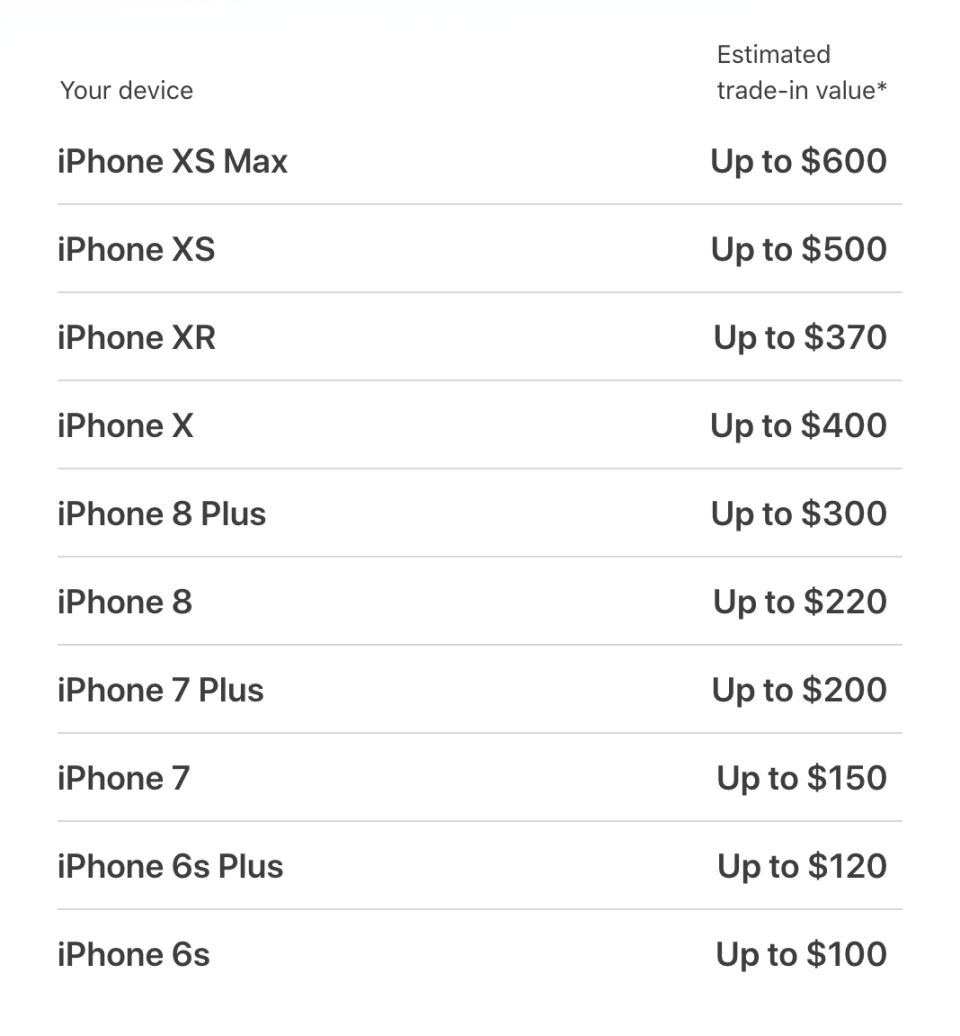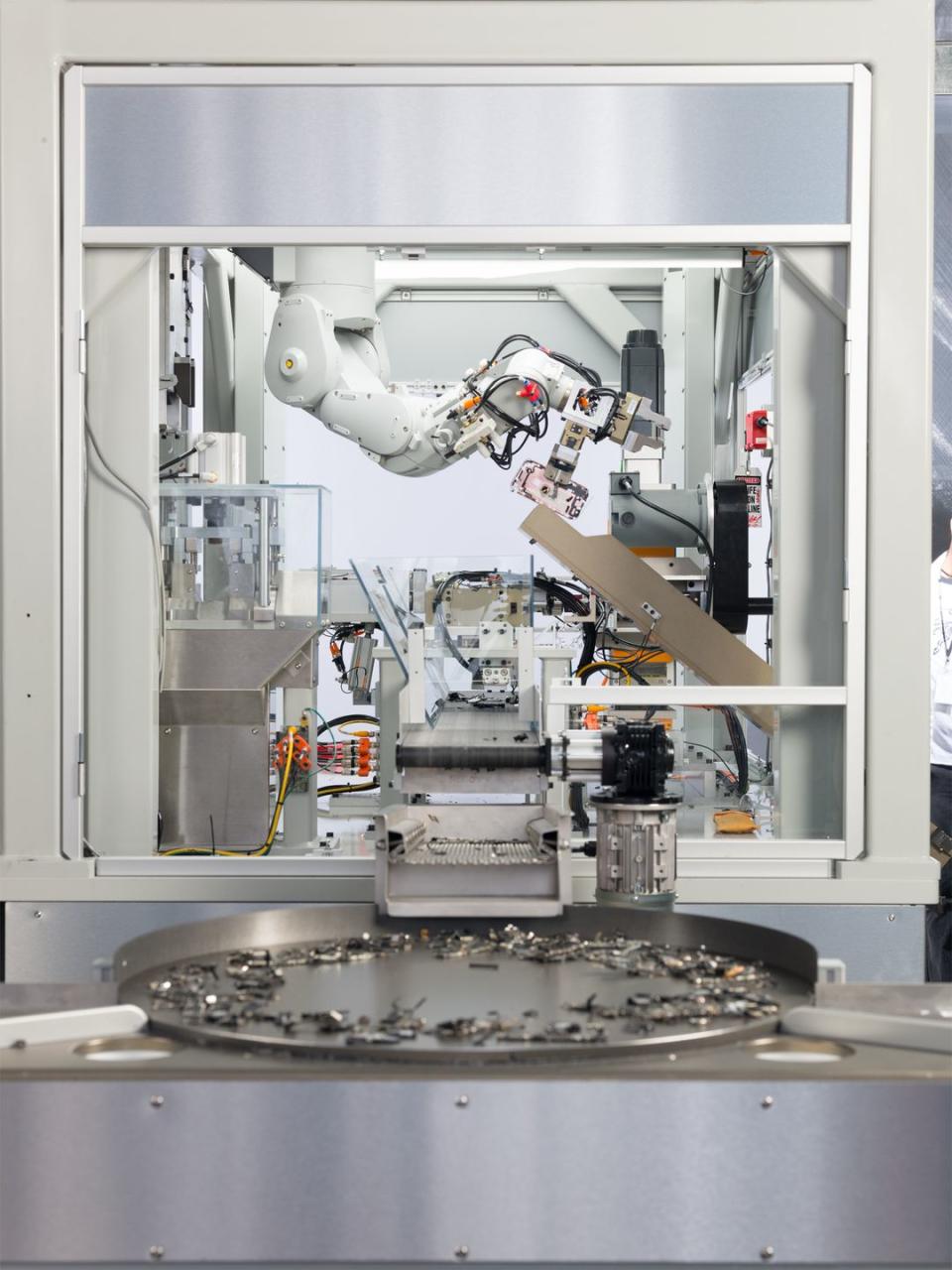How Apple's Sustainable iPhone Trade-In Program Works

If you're planning on tossing your your old iPhone in the garbage or shoving it in a drawer to collect dust—don't. Instead, if you use Apple's Trade-In program you can pat yourself on the back for not contributing to the heaps of non-recycled electronics that literally lay in heaps around the world (and sometimes explode).
The new Apple Trade-In program, which basically lets you turn in your old device for a discount on a newer one, is just one of the recent steps the Cupertino tech giant has made toward sustainability and green tech. For example, each tree that is used to make paper products that Apple plans to use, the company will ensure a new one is planted in its place. CEO Tim Cook even won an award last month from Ceres, a nonprofit organization focused on sustainability.
But recycling your iPhone is one of the best things you can do with your aging gadgets because each phone is a collection of rare-earth metals, hazardous materials, and other components that won't decompose so easily in a landfill. So if there's an old phone sitting in a dusty desk drawer somewhere, this guide will walk you through how Apple's Trade-In program works and how you can help downsize smartphones' carbon footprint.
How Does the Apple Trade-In Program Work?
Here's how it works: Apple users can bring in their iPhones, iPads, Macs, MacBooks and more to any Apple store and trade them in for eligible credit toward your next device. Or, you can opt for a gift card, instead. If you can't make it to an Apple Store, the company will send you a prepaid trade-in kit or shipping label to send your device in to them. No trip required.
The program has been around since 2013 and Apple reports that nearly eight million people have received refurbished phones through the program last year.
"I feel like this year we’ve really moved the dial on getting the consumer to think about trade in," Cook said at a special press event before he accepted the sustainability award from Ceres. Below are the estimated discounts you can expect for turning in various models of iPhones, for instance:

There are similar lists with payout estimates for iPads, Mac desktops, and laptops, Apple Watches and other devices that you can check out here.
Through the Apple Certified Refurbished program, the devices you turn in for cash or credit toward a new device are rehabbed and resold. Apple completes a "rigorous refurbishment process that includes full testing that meets the same functional standards as new Apple products," according to the company's website. Those devices can usually be bought at a 15 percent discount.
Cook noted during the October press event that Apple makes sure the "highest percentage humanly possible of [traded-in iPhones] wind up back in the hands of someone who wants them."
If your phone or other device is not eligible for the Apple Trade In program, it can still be recycled for free, which is equally as important as saving a few bucks on a new phone.
Let's Talk About Daisy

In April, Apple announced a major overhaul of its recycling programs. The company quadrupled the number U.S. locations that customers can send their iPhones to so that they can be disassembled by Apple's hardworking employee—Daisy the robot.
As part of the Apple Trade-In program, Apple users can drop their iPhones off at local Best Buy stores, which is partnering with Apple. The devices then make their way to KPN Netherlands, a Dutch telecommunications company, which is also Daisy's home base.
There, Daisy disassembles and recycles the phones, and she does it fast—she can disassemble 15 different iPhone models at the rate of 200 per hour, recovering more materials for reuse. Once collected, the parts are recycled back into the manufacturing process where elements like cobalt (used for the batteries) are combined with scrap to make brand-new batteries.
From every 100,000 iPhone devices, Daisy has the potential to recover: 1500 kg aluminum, 1.1 kg gold, 6.3 kg silver, 32 kg rare earth elements, 83 kg tungsten, 1,000 kg copper, 29 kg tin, 790 kg cobalt, 1,400 kg steel, according to Apple. The company also refurbished 7.8 million Apple devices in 2018, alone, saving 48,000 metric tons of waste from landfills.
So don't toss those phones in the dumpster—don't make Daisy the robot sad.
You Might Also Like

